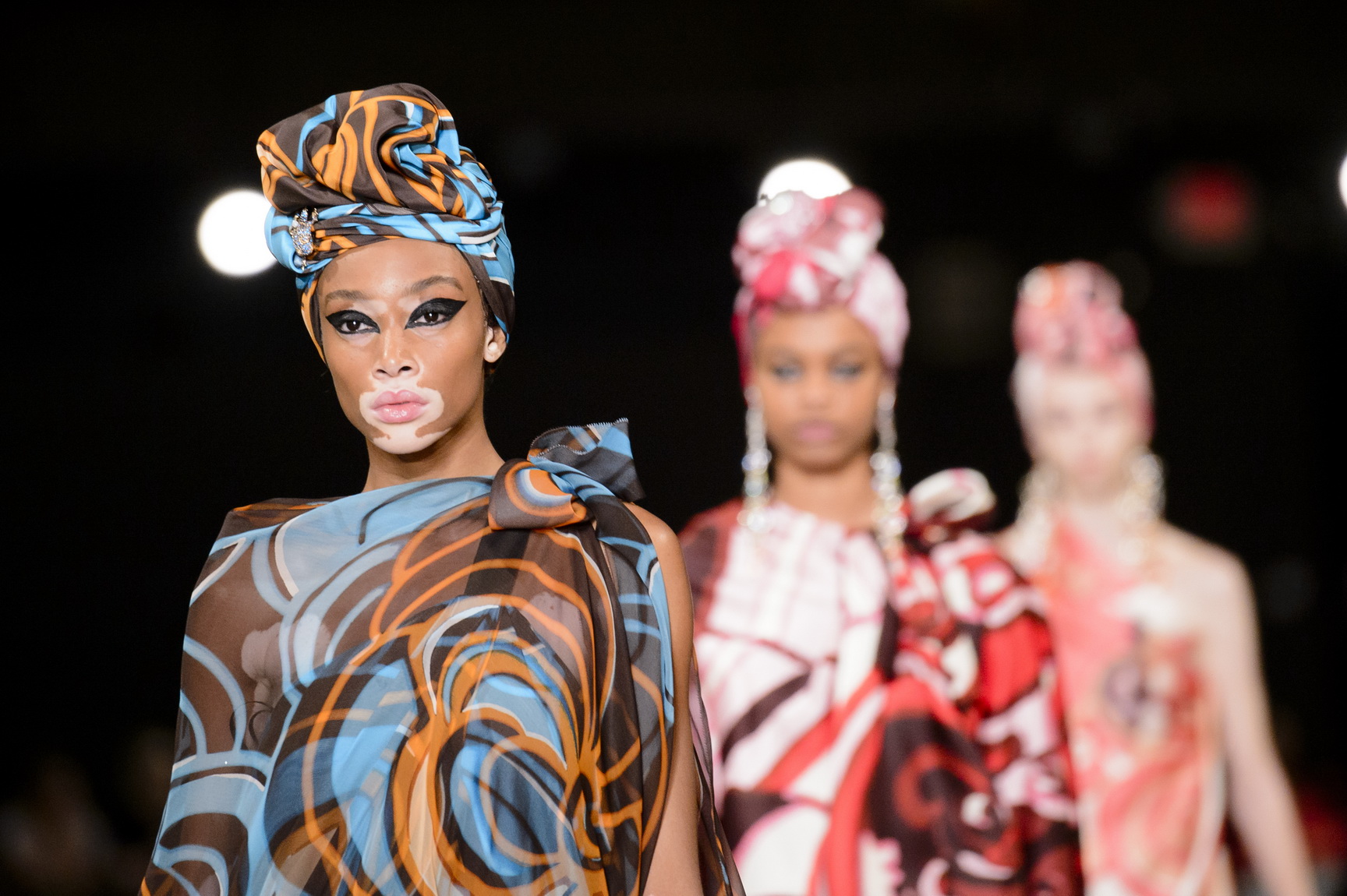“Hats are a great antidote to what’s going on,” fashion’s favourite and most prolific hatmaker Stephen Jones explains. “It’s really their purpose to put a happy face on a sad world.” Well, with everything than engulfs 2017, he’s in as much demand as ever. From the on-vacation silk turbans at Marc Jacobs to the Four Weddings and a Funeral exaggerations at Ryan Lo, the denim veiled berets at Dior to the tulle bubbles at Thom Browne, Jones once again created this season’s most head-turning, gravity-defying, imagination-igniting headwear. With 40 years in hats, there’s no stopping this magician of millinery.
“What attracted me to millinery?” Jones ponders, “I feel like it was decided for me and it sort of happened naturally,” he replies. “The people who worked in it attracted me to it initially, the craft I liked because somehow it was smaller scale to clothing and I can get my head around it, and it was uniquely expressive.” After graduating from Saint Martins School of Art in 1979, the Cheshire-born, London-drawn dreamer started out by making hats for his fabulous friends — Steve Strange was his first customer — and the dancefloors of 80s London were his first catwalks, but he was soon invited to collaborate on fashion shows across the globe — New York, Montreal, Helsinki and Tokyo. Then he became the first British milliner to work in Paris designing hats for Jean Paul Gaultier, Thierry Mugler and Comme des Garçons. From Stephen Linard to Ryan Lo, the Blitz club to haute couture, Princess Diana to Pippa Middleton, Boy George to Bridget Jones, Ascot to Alaïa, Jones continues to reinvent millinery. While recovering from six spring/summer 18 collaborations, he answers the ten questions we always wanted to ask a millier.
Why should people wear hats?
A hat makes clothing identifiable, dramatic and, most importantly, fashion. Everyone from showgirls to dictators know that by wearing a hat they will be centre of attention. They make a girl look like a princess and a princess look like a queen. They are completely transformable. They are the most powerful accessory.
What would you say to the people who say, “Oh, I don’t suit hats”?
They haven’t tried.
What was the first hat you ever created and how do you feel about it now?
There were two. There was one which was made out of black towelling and red net like a David Bowie flash, but that was just a headband. The first proper hat I made was from my sister’s blouse, a box of cornflakes and a plastic Iris. The first hat I created for a fashion show was a low, round, crowned felt, which looked a little bit like the Pope’s hat, which was made for Jasper Conran’s show.
What’s the craziest brief you’ve ever received from a designer?
“Egyptian, school girl, cocktail” for John Galliano.
Could you tell us about one of the best reactions to a design you’ve ever received, both from a designer or creative director you’ve worked with, and the press too?
I often look back on a hat wish it had been different somehow, it forces you to go onto the next thing. The best reaction from a designer — so many! Marc Jacobs for this autumn/winter 17 collection. The best reaction from the press was from the Mohican Peruvian knit hat on Gisele, it was on the cover of newspapers around the world. More recently the bridal veil I made for Pippa Middleton, and Giles Deacon made the wedding dress.
And the worst?
The worst reaction was from a certain female Japanese designer, I took the hats out of the box, and she said, “Who briefed you on that?” The worst reaction from the press, was when I made a hat for Celine Dion at the Oscars.
What show/season has affected you most?
Maybe the first season I launched my Miss Jones collection, in 1990, when I actually showed at a trade exhibition for the first time. It affected me the most because it really introduced my hats to a much broader range of people, and it was really important. And the first season I went to work in Paris in 1984.
What is the the strongest truth about fashion week?
As Oscar Wilde famously said, “Fashion is a form of ugliness so intolerable that we have to alter it every six months.”
If you could change one thing about fashion week and the show system, what would you choose and why?
I would change the dates so it was more evenly six months and six months, not four months and eight months.
What has been the greatest lesson learned throughout your 40-year career?
Designers come and designers go, no one is immortal.
Four decades in, what drives you to continue creating and collaborating for fashion week?
It’s exciting and wonderful, when I meet a young designer and I am always fascinated by their point of view, because they are of a different generation and if you keep your ears and eyes open, it’s fascinating to see what makes them tick.
Finally, what advice would you give the next generation of would-be hatmakers who daydream about following in your footsteps?
Don’t look before you leap! I think millinery has a very good future because I think people are more into creating and wearing hats now than when I first started. When I first started it was seen as an anachronism, now it is seen as a vehicle of creativity and people love wearing hats too. My fears are that there are going to be fewer and fewer suppliers in Europe because so much of big manufacturing is not in Europe, but that will also cause people to become more inventive.
